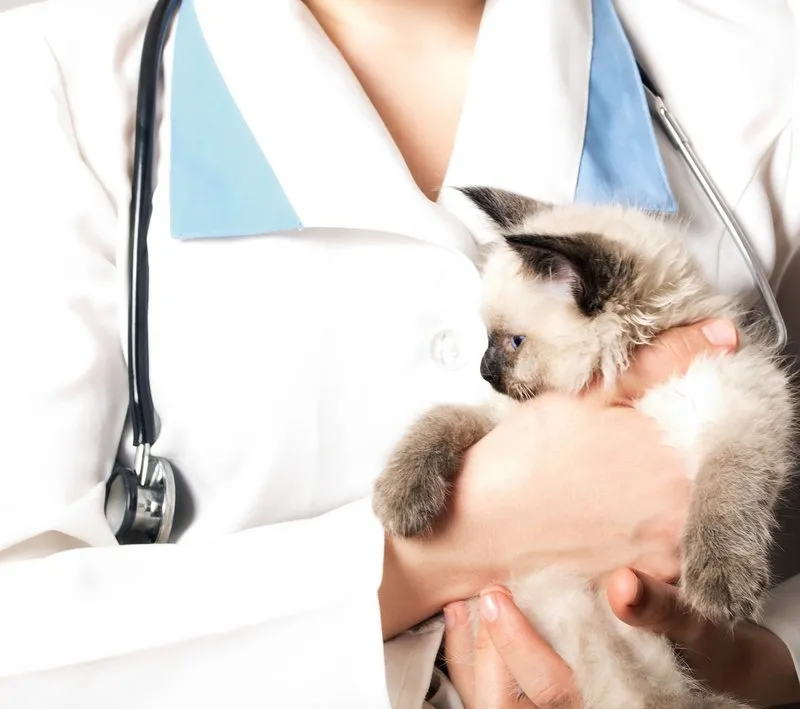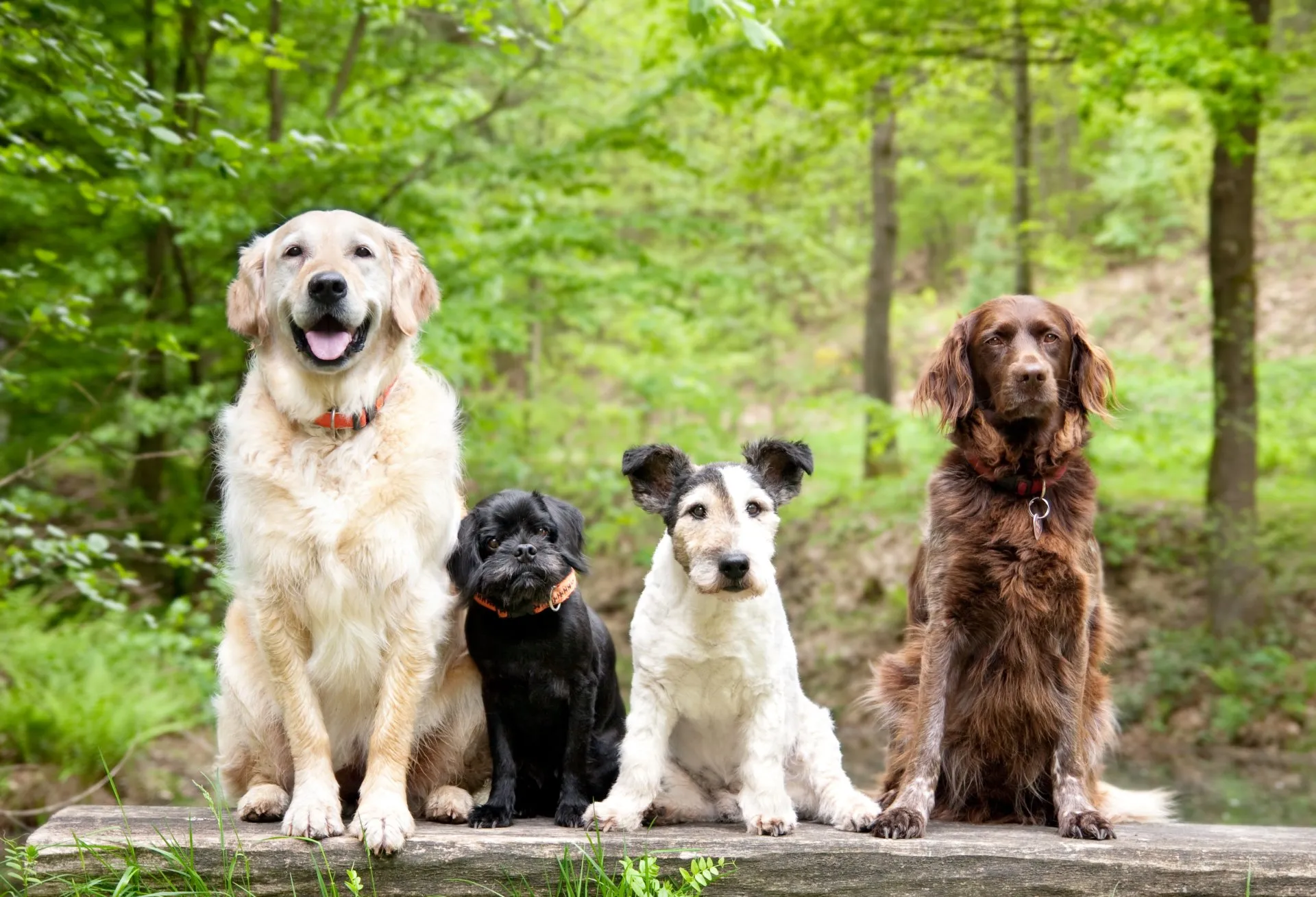With the vibrant colors of fall just around the corner, it’s time for pet owners to take a few extra steps to ensure their furry companions stay safe and happy during this season of change. Just like we humans adjust to the cooler weather and shorter days, our pets also need a bit of extra care during the fall.
Read on as a vet offers up five essential fall safety tips to keep your pets wagging their tails all season long.
Embrace the Sweater Weather
Just like we grab our cozy sweaters to stay warm, our pets can benefit from a little extra insulation too! Some pets, especially those with shorter fur, might feel the chill as the temperatures drop. Invest in a stylish pet sweater or jacket to keep them warm during your outdoor strolls.
And keep in mind that smaller and shorter-haired breeds will likely need a cozy pet sweater or jacket. Just like how we bundle up, they’ll appreciate the extra warmth. Even dogs with thicker coats, like poodles (who have their own special day – Poodle Day), may benefit from extra protection in colder climates.
Watch Those Paws
Fall means fallen leaves, and while they may look beautiful, they can hide some hazards for our furry friends. Wet leaves can be slippery, increasing the risk of your pet taking a tumble. Moreover, some leaves might hide sharp objects or even insects. Keep a keen eye on where your pet is walking, and consider wiping their paws when you come back inside to avoid any irritations or discomfort.
Mind the Treats
As the holiday season approaches, it’s tempting to share some of those delicious fall treats with our pets. However, some human foods can be harmful to them. For instance, chocolate and grapes are no-nos for pets. Even some seemingly harmless fall spices like nutmeg can be toxic. Stick to pet-friendly treats and consult your vet before introducing any new foods into your pet’s diet.
Stay Visible
The days will be getting shorter, and darkness sets in earlier. This means that visibility becomes a crucial aspect of keeping your pet safe during your evening walks. Invest in a reflective collar, leash, or even a little vest for your furry friend. Not only will this make them easier to spot, but it will also add an extra layer of protection when you’re out and about.
Our Advice on Fall Safety Tips for Pet Owners in 2024
Are there any particular types of materials or fabrics that are best suited for pet sweaters and jackets to ensure comfort and warmth?
For pet sweaters and jackets, materials that ensure comfort and warmth are crucial. Fabrics like fleece or wool are excellent choices as they provide insulation while being breathable, keeping the pet warm without overheating. It’s also beneficial to choose water-resistant materials for outer layers, especially in damp fall weather. For pets with sensitive skin, opt for hypoallergenic materials to prevent irritation. Ensure the clothing fits properly without restricting movement, checking that it’s snug but not tight, allowing the pet to move freely and comfortably.
What are some common signs that a pet may have consumed a toxic substance, and what should pet owners do in such situations?
Common signs that a pet has consumed a toxic substance include vomiting, diarrhea, excessive drooling, lethargy, difficulty breathing, and seizures. If pet owners suspect their animal has ingested something harmful, they should immediately contact their veterinarian or an emergency pet poison hotline. It’s crucial not to induce vomiting unless specifically instructed by a professional, as this can sometimes cause more harm. Providing the vet with information about the substance ingested, the amount, and the time of ingestion can facilitate quicker and more effective treatment.
Are there any specific breeds or types of pets that are more susceptible to the hazards associated with fallen leaves?
Certain breeds or types of pets are indeed more susceptible to hazards associated with fallen leaves, particularly smaller, shorter-haired breeds that are closer to the ground and more likely to come into contact with hidden dangers. Breeds with long, flowing coats may also be at risk as leaves and debris can become entangled in their fur, potentially hiding ticks or causing skin irritations. Additionally, breeds with known respiratory issues should be carefully monitored, as moldy leaves can exacerbate breathing difficulties. Owners of these pets should be particularly vigilant during fall.
What are some pet-friendly alternatives to popular fall treats that pet owners can offer their furry companions?
Pet owners can offer several pet-friendly alternatives to popular fall treats to ensure safety and enjoyment. Instead of human sweets, consider pet-safe treats like pumpkin puree (not pie filling), which is high in fiber and good for digestion. Small pieces of cooked turkey, without any skin or bones, are also a safe choice. Apples (without seeds), carrots, and sweet potatoes can be given as healthy snacks. Always avoid chocolate, grapes, raisins, and spices like nutmeg, which are toxic to pets. These alternatives provide festive flavors without the risks.
How can pet owners ensure that their pets remain visible to drivers and cyclists during evening walks?
To ensure pets remain visible to drivers and cyclists during evening walks, pet owners should invest in reflective gear such as collars, leashes, and vests. These items enhance visibility, reflecting light from vehicle headlights back to drivers, making the pet stand out in low light conditions. Additionally, using LED light-up collars or attachable blinking lights can further increase visibility. It’s also advisable to choose well-lit routes for walks and to keep pets on a short leash near traffic to maintain control and visibility.
If you have more questions or wish to schedule your furry companion for a wellness checkup or vaccinations, please don’t hesitate to call us, your local vet in Live Oak, FL, anytime! Regular check-ups are especially important as we transition into a new season to ensure your pet stays healthy year-round.




!Social Media Icons